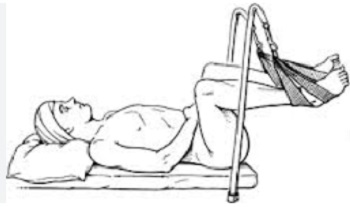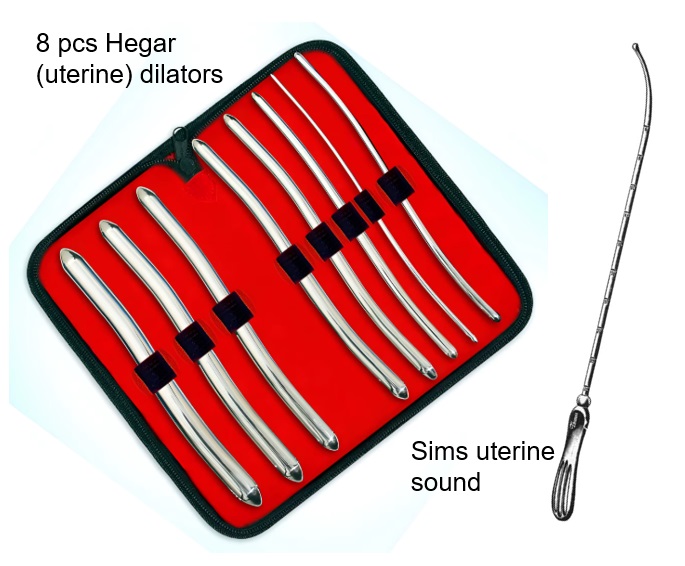IUCD insertion and removal: A simple guide for African women
Dr Glory Udochukwu Maduka, MB.BS. DLHA Volunteer and Freelance Health Writer. Medically reviewed by:

Three dimensional images of copper T (A) and hormonal (B) IUCDs. Image credits: Freepik
Highlights
- An IUCD is a small T-shaped device placed inside the uterus to prevent pregnancy and is 99% effective.
- There are two types of IUCDs: copper and hormonal.
- Insertion and removal are quick procedures done by trained health workers in a clinic.
- Insertion happens in three steps: preparation/examination, insertion, and post-insertion care.
- Removal is usually simple, done by gently pulling the strings.
- A woman can get pregnant quickly after removing the IUCD unless another contraceptive method is started immediately.
Introduction
An intrauterine contraceptive device (IUCD) is a small, T-shaped device that a doctor or nurse places inside the uterus (womb) of a woman to prevent pregnancy. They are 99% effective in birth control and last at least 5 years and more.
There are two types of IUCDs: Copper, and Hormonal
The insertion or removal of an intrauterine device insertion is performed in the clinic (outpatient), and takes about 15 minutes or less respectively. The procedures should be performed by trained healthcare professionals after thorough examination and proper service setup to ensure that they are done correctly and safely.
While this report focuses on providing you with accurate information on how IUCDs are inserted and removed from the uterus (womb), you can learn more about the types, indications, how it works, risks, benefits, side effects and contraindications of IUCDs from here.
How IUCD is inserted
The insertion of an IUCD into the uterus is carried out according to the following steps:
- Preparation and examination
- Insertion
- Post-insertion
Specific instruments, sterile gloves, cleaning solutions and the IUCD device itself should be available.
Step 1: Preparation and examination
- Your provider will first obtain a brief reproductive history and learn about your need for family planning.
- Next, your provider will explain the basic steps of the procedure and expectations to you.
- An informed consent for the procedure will be obtained from you while advice is provided about pain management. You may be sedated moderately for relaxation and to reduce procedure anxiety, but you’re never put to sleep.
- You will be asked to lie on your back with your thighs open and legs held in stirrups (dorsal lithotomy position).

Illustration of a patient in dosal lithtomy position
- Your provider will get gloved and perform a bimanual exam to check your uterus (womb), then take a direct look at its opening (the cervix), before cleaning it and the vagina with antiseptic (cleaning solution).
- A sterile thin palstic or stainless steel rod (uterine sound) may be inserted through the opening of your womb to measure its depth and assess its position.
- If the cervical canal is too small, dilators may be used to open it up.

Photo of uterine dilators and sound. Click on image to enlarge. Click on image to enlarge
- If the uterus is less than 6 cm or more than 10 cm, the insertion would be paused, and ultrasound assessment considered.
- If the assessment of the uterus is normal then the insertion of the IUCD will proceed.
Step 2: Insertion

Illustration showing an intrauterine contraceptive device (IUCD), insertion kit and a vaginal speculum. Click on image to enlarge.
- Before the IUCD is inserted, your provider will open its package carefully under sterile conditions and check that the arms are horizontal.
- The IUCD is then loaded into a thin plastic insertion tube with the attached thread extended out of the insertion tube.
- Using appropriate instruments (tenaculum to grip and hold the cervix and vaginal speculum to open up the vagina in order to have the cervix well in view), your provider will insert the tube through your cervical canal into the cavity of your uterus (womb).
- The IUCD is then released into your uterus by moving a slider or plunger. When released, the “T” arms of the IUCD will open into position inside your uterus. This usually occurs after a wait of 10 seconds following the release.
- Your provider will then gently withdraw the insertion tube while leaving the IUCD in place in the uterus and the thread passes through cervix into vagina as all instruments are removed..
- The thread of the IUCD is usually trimmed in the vagina to about 3 - 4 cm in length below the opening of your cervix so that it is discreet but still reachable for examination by you.
Step 3: Post-insertion
- On completion of the insertion of the IUCD, all instruments used during the procedure are removed and you will be cleaned up and asked to get dressed.
- A follow up appointment is usually scheduled for you to come back a few weeks after to check on your wellbeing and that the IUCD is properly in place.
- You may be advised to take over the counter pain relievers if you experience pain or cramps in your uterus in the days following the insertion.
How IUCD is removed
- When it's time to remove the IUCD (intrauterine contraceptive device) or if you request removal for whatever reason, your healthcare provider will begin the procedure by asking you to lie on your back on the examination couch with your legs open and held in the lithotomy position on stirrups.
- Your provider will use a speculum to open up your vagina in order to see the cervix. The IUCD strings are usually visible.
- Then your provider will gently pull on the IUCD threads using a ring forceps.
- Steady, gentle pulling should bring the IUCD into the vagina easily.
- After removal, the speculum is taken out of the vagina and you are on your way home.
- If the strings are not visible to your provider during IUCD removal, they will insert a special brush (cytobrush) into your cervical canal, twist it, and then pull it out. This may help bring the strings into view in the vagina.

Ilustration of an IUCD removal hook. Click on image to enlarge.
- If the strings are still not visible with the cytobrush, your provider will insert an IUCD hook into your cervical canal or uterus to grab the IUCD threads or arm and pull them into the vagina for removal.
Post removal considerations
- Before leaving the clinic, expect your provider to inform you that your fertility would return promptly.
- If you do not want to get pregnant, you should request for and start using another form of contraception right away.
- If you want to continue using an IUD, a new one can be inserted during the same visit.
Conclusion
Inserting or removing an IUCD is a quick and safe procedure performed by a trained provider. Most women tolerate it well, and a follow-up check ensures its proper placement. Fertility returns quickly after removal, so women should consider another contraceptive method immediately if they wish to avoid pregnancy. IUCDs are highly effective and reliable forms of birth control.
Related: Intrauterine Contraceptive Device: What Africans Need to Know
Published: November 25, 2025
© 2025. Datelinehealth Africa Inc. All rights reserved.
Permission is given to copy, use and share content freely for non-commercial purposes without alteration or modification and subject to source attribution

